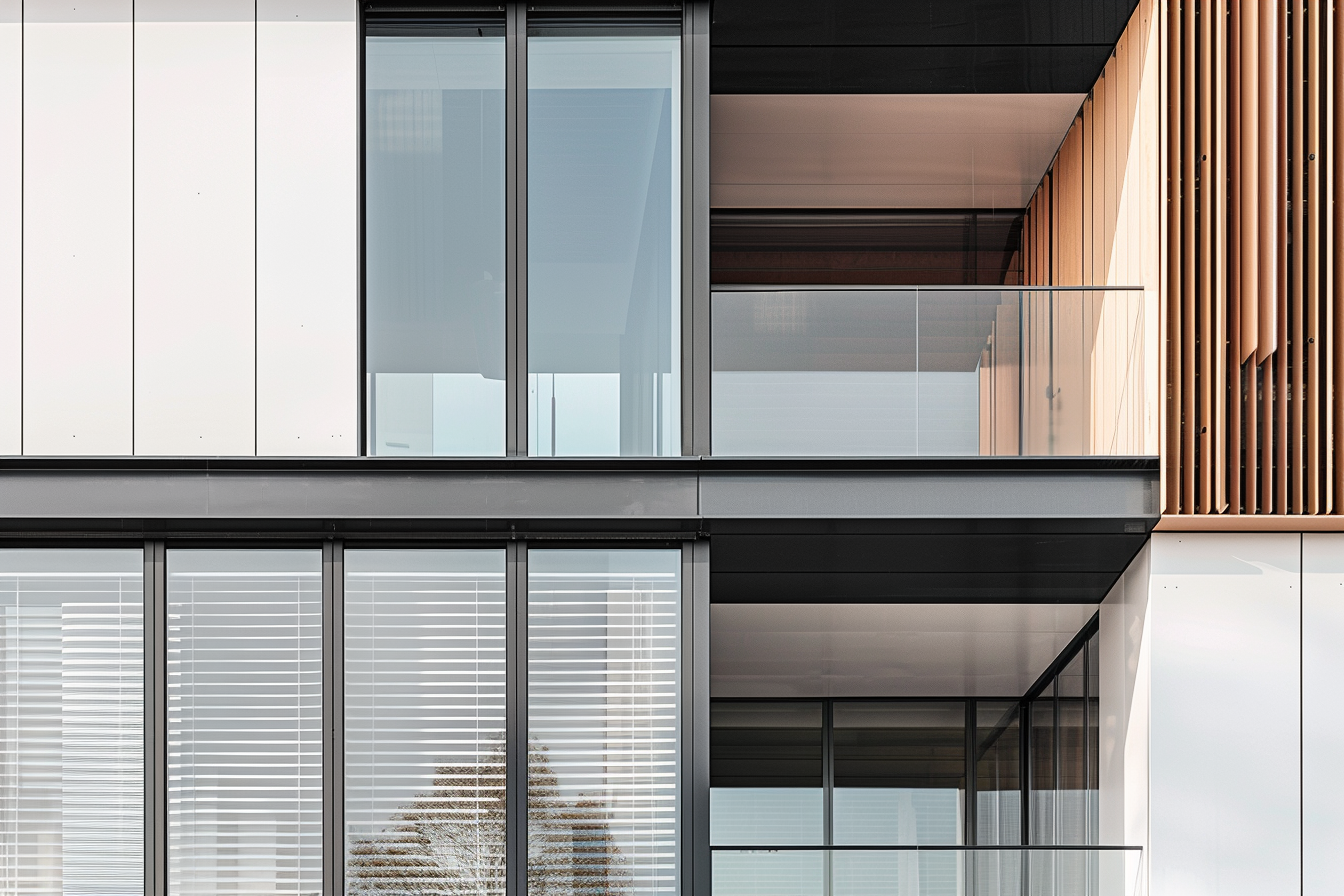Façade Performance

Introduction
The façade is the face of a building—its first impression, its personality, and its skin. More than just a visual statement, a well-designed façade must mediate between aesthetics and a complex set of technical requirements. From thermal insulation and structural integrity to daylighting, acoustics, and weather protection, façade performance is a multidimensional challenge.For recent architecture graduates entering practice, understanding façade design goes beyond form-making. It requires fluency in material behavior, environmental response, and integration with structural and mechanical systems. This article provides a comprehensive framework that connects academic theory with the demands of real-world architectural practice.
What You Will Learn:
- Core principles and terminology of façade performance
- How aesthetics and performance influence each other
- Detailed analysis of exemplary projects
- Technical requirements and regulatory compliance
- Practical steps to design and deliver high-performing façades
Theoretical Foundation
Core Concepts of Façade Design
- Form vs. Performance: Aesthetics should not compromise technical performance. High-performance façades are beautiful because they work well, not in spite of it.
- Envelope as System: The façade is a critical component of the building envelope—a barrier that controls heat flow, moisture, air movement, and noise.
- Material Response: Every material behaves differently under load, temperature, and weather. Understanding their properties is key to rational design.
- Passive Design Principles: Façades contribute to energy efficiency through natural ventilation, daylighting, and solar shading.
Historical Context
- Classical Façades: Ornamented, load-bearing structures with hierarchical composition.
- Modernist Shift: Emphasis on "truth to materials" and curtain wall technology.
- Contemporary Façades: Responsive skins that adapt to climate and user needs using advanced technology.
Key Terminology
- Thermal Bridging: Heat loss that occurs through conductive elements.
- R-value: Resistance to heat flow; higher values mean better insulation.
- U-value: Rate of heat transfer; lower values indicate better performance.
- Air Infiltration: Uncontrolled air leakage through the façade.
- Rain Screen: A ventilated outer layer designed to drain and evaporate moisture.
Pro Tip: When specifying composite façade systems, verify the system performance, not just individual material specs.
Practical Application
Case Study 1: Al Bahr Towers, Abu Dhabi (Aedas + Arup)
- Design Feature: Kinetic mashrabiya system responds to sun angle.
- Performance Impact: Reduced solar gain by 50%, improved daylighting.
- Integration: Traditional Islamic motifs meet high-tech solutions.
Case Study 2: The Edge, Amsterdam (PLP Architecture)
- Design Feature: Triple-glazed curtain wall with solar shading and operable panels.
- Performance Impact: Net-zero energy use, BREEAM "Outstanding" rating.
- Integration: Glazing, sensors, HVAC work as a synchronized system.
Case Study 3: Institut du Monde Arabe, Paris (Jean Nouvel)
- Design Feature: Façade of light-sensitive diaphragms inspired by Arabic geometry.
- Performance Impact: Dynamic control of light and privacy.
- Integration: Cultural symbolism embedded in high-tech system.
Common Challenges
- Visual vs. thermal performance conflicts
- Long-term durability of moving components
- Integrating mechanical access and maintenance
Pro Tip: When selecting dynamic façade systems, budget for maintenance and software updates.
Technical Considerations
Environmental Performance
- Thermal Insulation: Use continuous insulation to prevent bridging.
- Solar Shading: Fixed vs. dynamic; horizontal for south, vertical for east/west.
- Daylighting: Balance glazing ratios with glare control strategies.
- Moisture Control: Include vapor-permeable barriers to avoid condensation.
Structural Requirements
- Wind load resistance, seismic tolerance, and anchoring systems must be considered from early design.
Codes and Standards
- ASHRAE 90.1: Energy efficiency for envelope design
- International Building Code (IBC): Life safety and structural standards
- LEED / BREEAM: Sustainability certifications
Integration with Systems
- Coordinate façade details with HVAC, lighting, and fire protection systems.
- Ensure penetrations for MEP are detailed to maintain envelope integrity.
Pro Tip: Check local climate zone maps before finalizing façade insulation specs—one size doesn’t fit all.
Implementation Guide
Step-by-Step Process
- Climate Analysis: Identify solar paths, prevailing winds, and thermal loads.
- Material Selection: Based on climate durability and aesthetic goals.
- Preliminary Detailing: Define layering logic early.
- Performance Simulation: Use software to test daylight, solar gain, thermal resistance.
- Design Development: Coordinate with consultants (MEP, structural).
- Mock-Up: Always build a full-size prototype for final review.
- Construction Documents: Include performance specs, anchoring details, and tolerances.
- On-Site Review: Monitor air/water testing, installation quality.
Best Practices
- Always detail for expansion and contraction.
- Avoid mixed-metal fasteners that can corrode.
- Use breathable membranes for complex geometries.
Common Mistakes and Solutions
- Mistake: Prioritizing looks over performance
- Solution: Validate design with performance simulations before final approval.
- Mistake: Neglecting thermal bridging at fasteners and anchors
- Solution: Use thermal breaks and isolate conductive components.
- Mistake: No provision for condensation drainage
- Solution: Design ventilated cavities and sloped sills.
- Mistake: Inadequate tolerance for movement
Solution: Allow for expansion in all cladding fixings and joints.
Pro Tip: Never finalize façade specs without consulting suppliers—custom elements may have lead times or constraints not obvious in early design.
Resources and Tools
Software
- Revit + Enscape: Visualize façade options in BIM
- Grasshopper + Honeybee: Environmental simulation
- THERM: Analyze heat transfer and thermal bridges
- WUFI: Simulate moisture movement through assemblies
Standards and References
- "Façade Construction Manual" (Detail Practice)
- "Building Enclosure Design" by John Straube
- ASHRAE, IBC, ASTM standards
Continued Learning
- Attend conferences like Facades+ and ZAK World of Façades
- Subscribe to journals like Architectural Science Review
- Explore manufacturer tech manuals and mock-up videos
Conclusion
High-performing façades are not simply cladding; they are climate-responsive, structurally integrated, and aesthetically expressive systems. For emerging architects, developing an understanding of façade performance means moving from shape-driven design to systems thinking.By combining passive strategies, technical standards, and cultural narratives, successful façades deliver comfort, sustainability, and beauty. The best designs are those that delight the eye and meet the metrics.Start small: study details, experiment with tools, ask manufacturers questions, and observe built work in person. Mastering façade performance is a journey, but it's one that pays off on every elevation you draw.